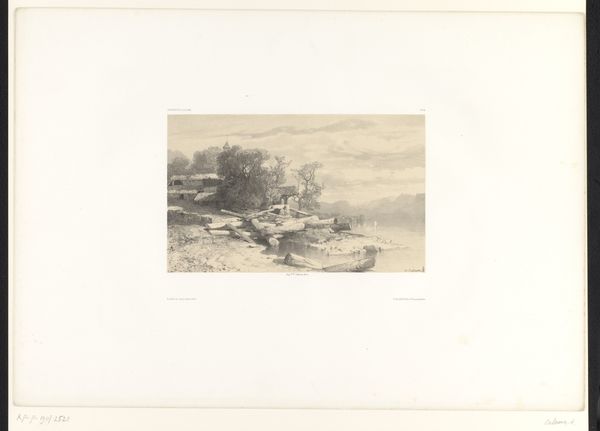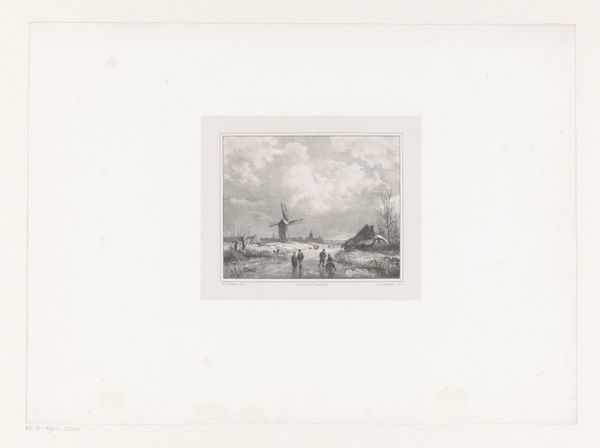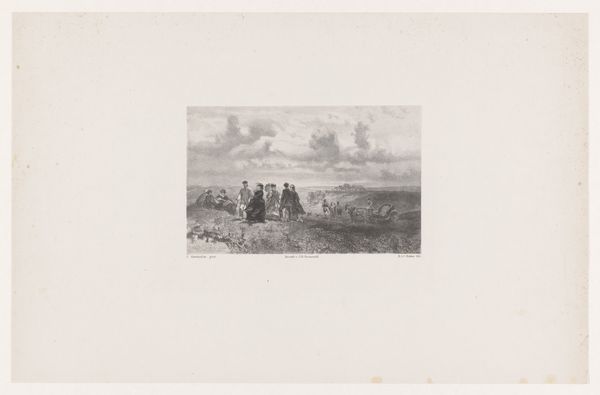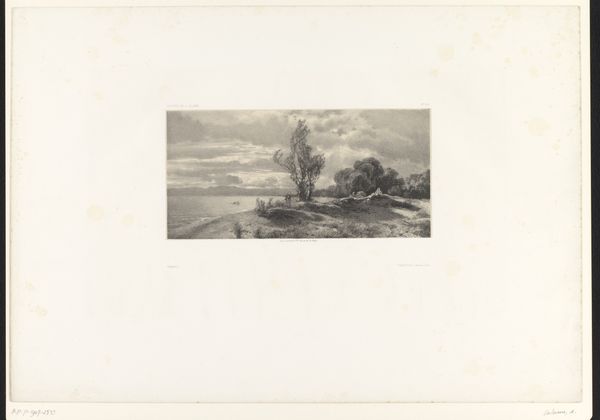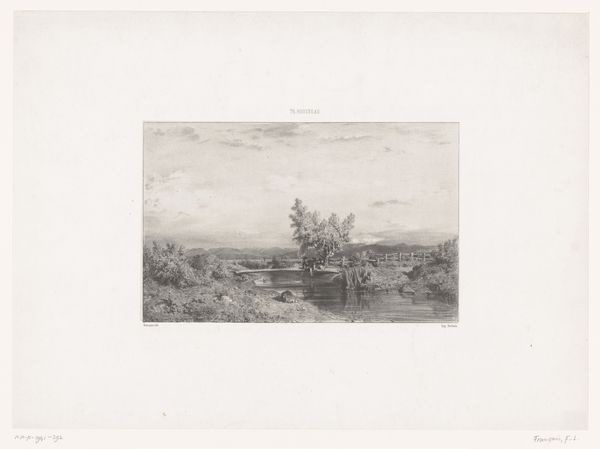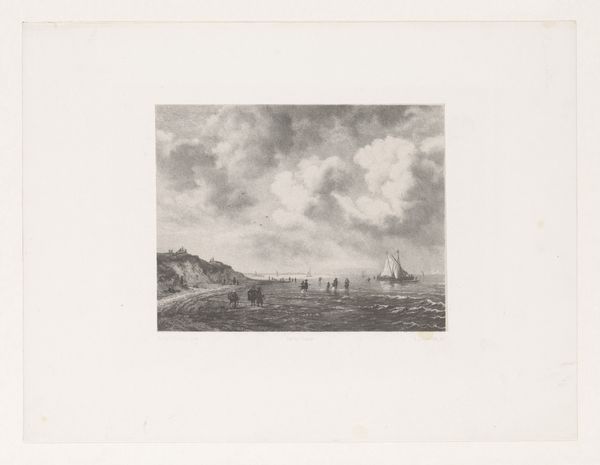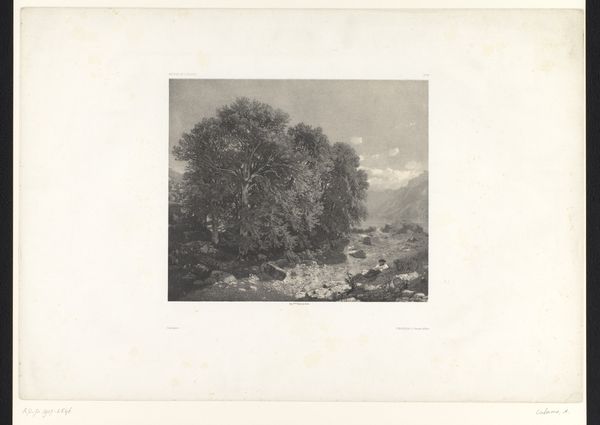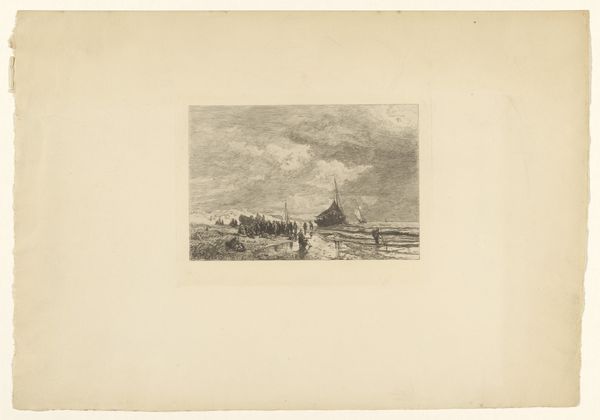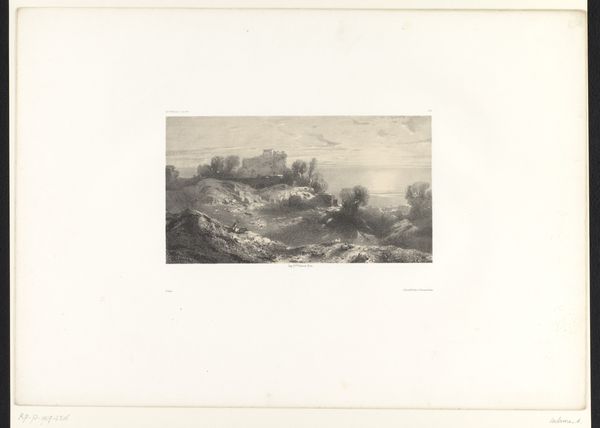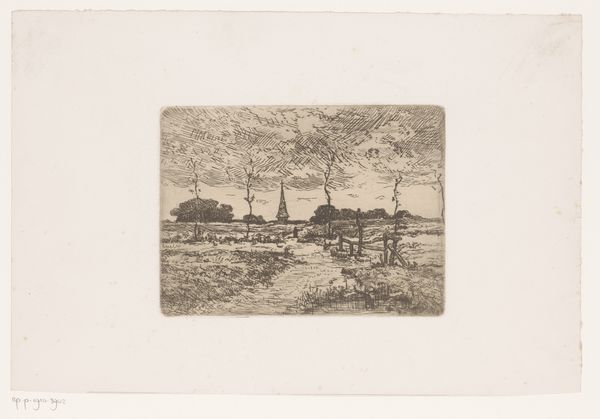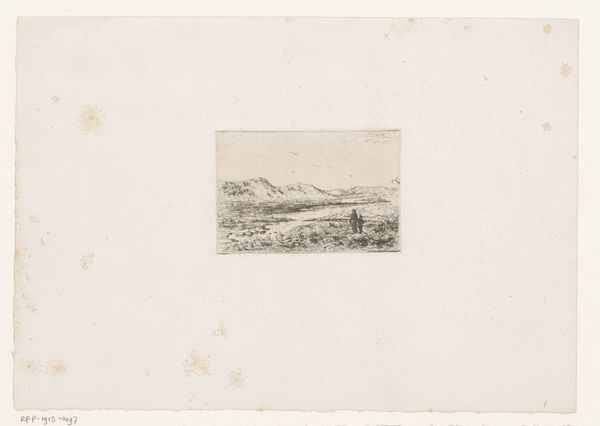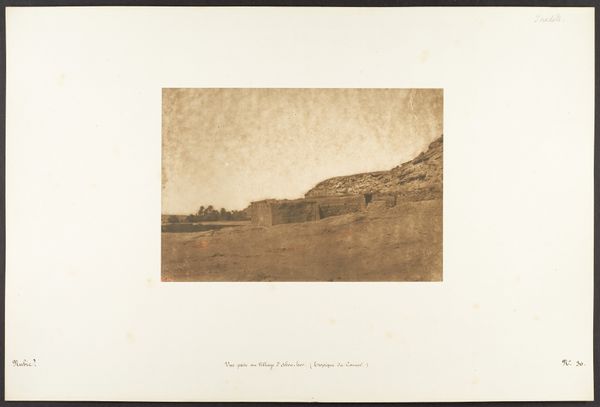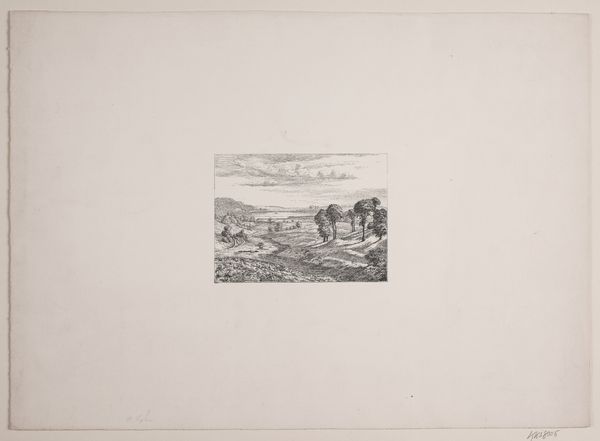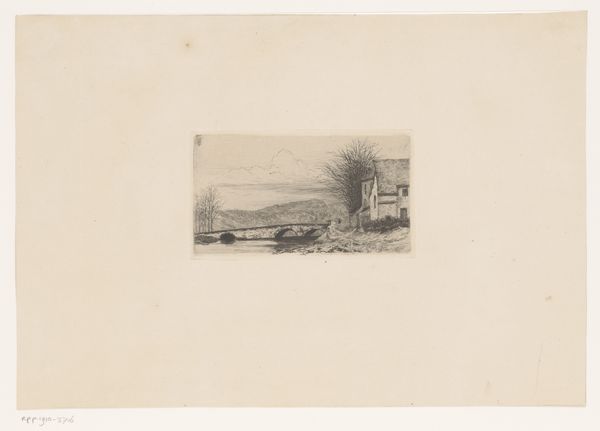
Dimensions: height 330 mm, width 402 mm
Copyright: Rijks Museum: Open Domain
This river scene, by Andreas Schelfhout, was printed using lithography, a method that democratized image-making in the 19th century. Unlike earlier printmaking techniques such as etching or engraving, lithography is based on the simple principle that oil and water repel each other. The artist would draw with a greasy crayon onto a flat slab of Bavarian limestone, treat it with chemicals, wet the stone, then apply an oil-based ink. This would adhere only to the drawn areas. The printmaker could then make multiple impressions simply by running paper across the surface. The result here is a soft, tonal image, almost like a drawing. The lithographic technique allowed for subtle gradations of light and shadow, which Schelfhout used to great effect in capturing the atmospheric conditions of a winter’s day. Considering lithography’s dependence on industrial extraction – from the limestone blocks to the printing press – we can appreciate how this seemingly gentle image is also tied to the world of labor, politics, and consumption.
Comments
No comments
Be the first to comment and join the conversation on the ultimate creative platform.
